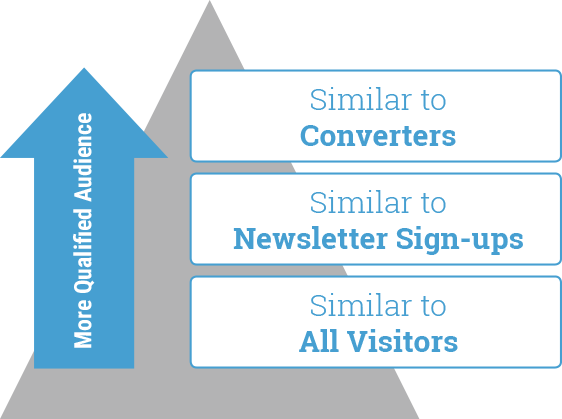Audiences, Audiences Everywhere…Now What?

Retargeting is a great way to attract website visitors who didn’t convert and helps the effectiveness of driving potential customers down the funnel to conversion. There are many lists to choose from when it comes to creating a retargeting campaign, so how do you know which one to use? Especially since over the years Google has rolled out new ways for marketers to retarget their site visitors in AdWords, starting with RLSA, then Google Analytics lists, and now Customer Match and Similar Audiences. These are some of the more popular lists offered, and with the latter two, Brands can start to get really creative in how they utilize their lists to reach their audience.
To kick things off, let’s start with the basics and explore examples of the most popular and profitable lists we can potentially use:
Regular RLSA: These are purely based off those who have or have not visited a page. Examples of audiences/segments include:
Google Analytics: 2 years in cookie length. Signed in users will start being tracked across devices starting this month. Some examples of audiences/segments are:
Similar Audiences: Slightly straying away from traditional remarketing, Similar Audiences for Search (now on Google and Bing) is the same as look-a-like audiences that Display and Social have used for a while now, except for Search!
This makes bidding on expensive Nonbrand terms a little less of a shot in the dark, however, because these audiences are more qualified, their Clicks are still expensive, but their engagement is a lot higher.

The last thing I want to say about this is to closely pay attention to the cookie window or membership duration when setting these up. Take your Brand’s vertical and audience into consideration – how often does my audience need to or is willing to purchase $400 shoes, medical apparel, or diapers? Depending on the product and purchase cycle, you’ll want to change your cookie window when reaching back out to those who have interacted with your site. Additionally – be realistic about the number of site visitors! You might not find some of the more niche lists like GA’s Site Search useful if you don’t have a ton of visitors.
Customer Match: A lot of marketers use this to create similar remarketing lists as regular RLSA lists (Converters, Newsletter Sign Ups), however we can take this a step further to reengage users who have purchased seasonal products and are searching for complementary products, for example:
As users stray from becoming Brand loyal, it’s important to keep those who have only purchased on your site once, engaged, and turn them into repeat customers. Segment your CRM data by frequency of purchases and target those who have purchased once (or twice) on your site to encourage them to come back to your site to purchase again.
When it comes to taking these lists and putting them to work, there have been two tried and true methods – bid only or target and bid.
The first, and most common, method, bid only, involves layering remarketing lists in campaigns and bidding up/down – it’s the easiest way to bid on audiences without creating a million campaigns. However, you’re left at the mercy of the base keyword bid to determine your percentage increase/decrease in spend for particular audiences.
The second method of segmenting audiences (target and bid) into their own set of campaigns allows you to have greater control when it comes to reaching users your brand values. Additionally, seeing shifts in different audience behaviors is a lot clearer and can insightful to brand owners when planning bigger initiatives (ie. brand loyalty dropping off as Revenue from New Visitor campaign increasing). Here are campaign examples:

But wouldn’t that create a million campaigns? Isn’t segmenting by device the next big thing? Depends. Like most things in digital marketing, look at your data! Start out by only segmenting high volume keywords; you don’t need to do this for your entire account if there isn’t enough traffic for certain keywords. And if you are seeing a more compelling argument to segment by device, definitely go that route, however if you don’t, it might be worth segmenting by audience.
Marketing has always been about how we reach our audiences (emphasis on the plural). With so many lists to choose from, it can get a bit confusing as to which is the best route for your brand. And since everyone is different then why would we reach them the same way? The method of bidding is just as important as deciding which list to use, so really take a step back and come up with your goals, and align them with which ever list and bidding method works best.
